Math Stations... Making Them Work for Your Classroom
Many elementary teachers have reading groups already established in their classrooms, but the idea of math groups seems foreign to many.
Reading groups is a teaching strategy that has been around for a long time. The idea behind reading groups is, as I understand it, is homogeneous groups that rotate between 4-5 stations. The idea with reading groups is that they're leveled so the teacher can work at the various reading levels in which the students need in the class. This is a time for differentiation... meeting kids where they are. Emerging, on grade level, or teaching advanced levels for that grade level are the usual levels.
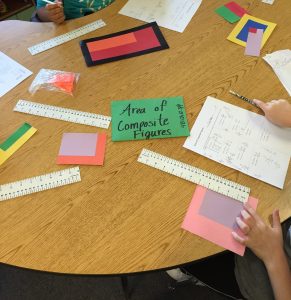
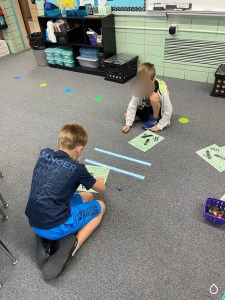
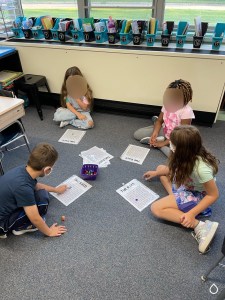
We here at Making Math Make Sense have a different approach when it comes to our Math Stations. We like to have heterogeneous groups when we do our stations. We like to have the varied leveled students in our groups. The students with the higher abilities are able to lead the groups when the groups are not with the teacher group, but also struggle often when they don't know something. The approaching grade level students aren't afraid to ask questions, but sometimes don't know what they don't know. The on grade level students are the glue in the group. They have the knowledge to know what they don't know yet and feel comfortable asking questions. The groups are expected to use teamwork, collaboration, and problem solving skills if they get stuck on something.
There are so many various ways you can implement Math Stations in your class. Here is how I have done stations in my own classroom over the last 8 years. At my school, each classroom always have one day a week that we don't have a special. I have always used those days as my station days. I have done anywhere between 4-6 stations during 2.5 hour period. Over the years, I have learned that 20 minutes per station is the sweet spot with time allotted per station, so do the math and see how many stations you can fit in your time frame. Make sure you account for about 5 minutes of clean up time and switching between stations.
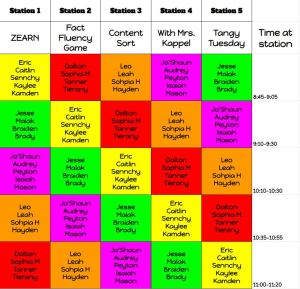 This is an example of what stations may look like in a single day. You may notice that in the time column, I have a break in the time, that's when my grade level had intervention time and students broke out into skill groups based off of benchmarking.
This is an example of what stations may look like in a single day. You may notice that in the time column, I have a break in the time, that's when my grade level had intervention time and students broke out into skill groups based off of benchmarking.
Kristin implemented stations differently. Kristin had her classes complete one station a day each day of the week and she was never in charge of a station. She would put her station right before or right after our lunch and recess block. She would utilize that time to pull a student one-on-one or a couple of students to complete make up work or to go over something.
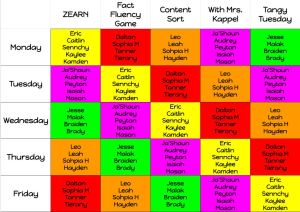 Here is an example of what doing a single station each day of the week looks like.
Here is an example of what doing a single station each day of the week looks like.
How do we pick what we do in our stations? It is pretty consistent if you were to see my plans for my weekly stations.
- Current content mini-lesson with Mrs. Kappel
- Math Puzzles, Sort, or Game on what Mrs. Kappel just went over
- Review content with teacher aide/intervention specialist/gifted specialist OR some sort of deeper mathematical thinking activity (Tangy Tuesdays, smaller version of 3 Act Task, Open Middle, Brain Teaser, etc)
- Technology Station
- Social Studies or Science assignment
I like for the students to meet with me at a station so that I can have that small group interaction with each student weekly. It allows them to have a little more comfortability answering or asking questions. I also like how in a smaller group setting I can get to know my students on a more personal level.
 2nd grade students are using a hanging chart to create a hundreds board.
2nd grade students are using a hanging chart to create a hundreds board.
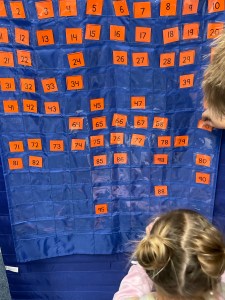 This group came to the interactive hundred chart later in rotations and found a mistake. They are fixing the problem. :)
This group came to the interactive hundred chart later in rotations and found a mistake. They are fixing the problem. :)
Before you start stations with the students, you have to teach them how to operate during stations. You have to teach them what the expectations are when they're working on their Chromebooks, in a math game/puzzle station, in the station with me, and so on. Students need to know what voice level they should be at. They need to know which stations they are working with a partner and what that expectation sounds like, looks like, and feels like. Your students need to know when they can interrupt you and the group you're currently working with.
Our classes have constantly LOVED station days over the years and they've always been my favorite days as well. When you're rotating groups every 15-25 minutes, the time flies by! If you have a good 2-3 hour block throughout your week, give stations a try for a solid month... one day a week, for 4 straight weeks, you'll LOVE them as much as I do!
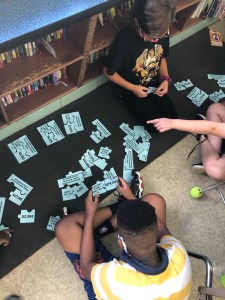 4th graders doing Number Form Puzzles with standard form, expanded form, and word form.
4th graders doing Number Form Puzzles with standard form, expanded form, and word form.
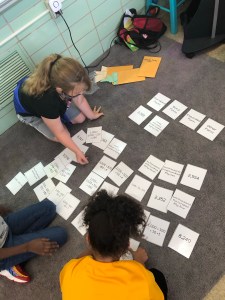 4th graders doing a Number Forms sort
4th graders doing a Number Forms sort
 2nd grade student putting together 100 Chart puzzles.
2nd grade student putting together 100 Chart puzzles.
I have provided you with an editable Google Sheet below that will prompt you to make a copy of. At the bottom of this Google Sheet, you'll see tabs that give you templates for 4, 5, and 6 groups. I also have a tab if you want to do groups like Kristin does, and want to do one station a day throughout the week.